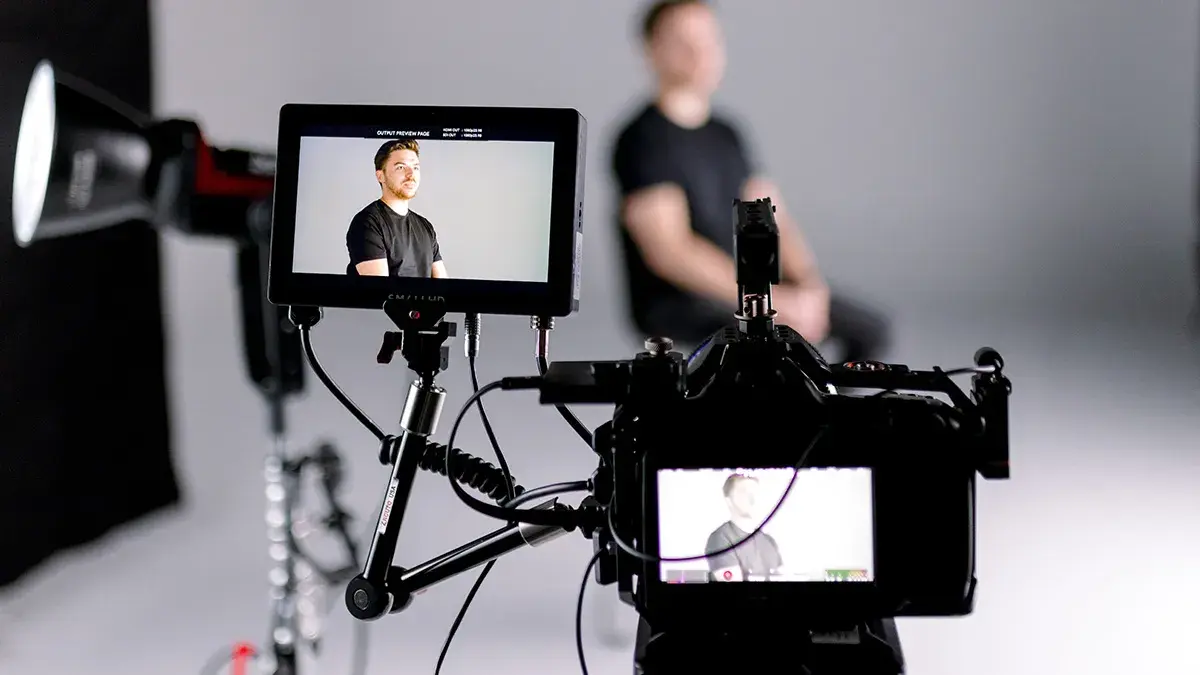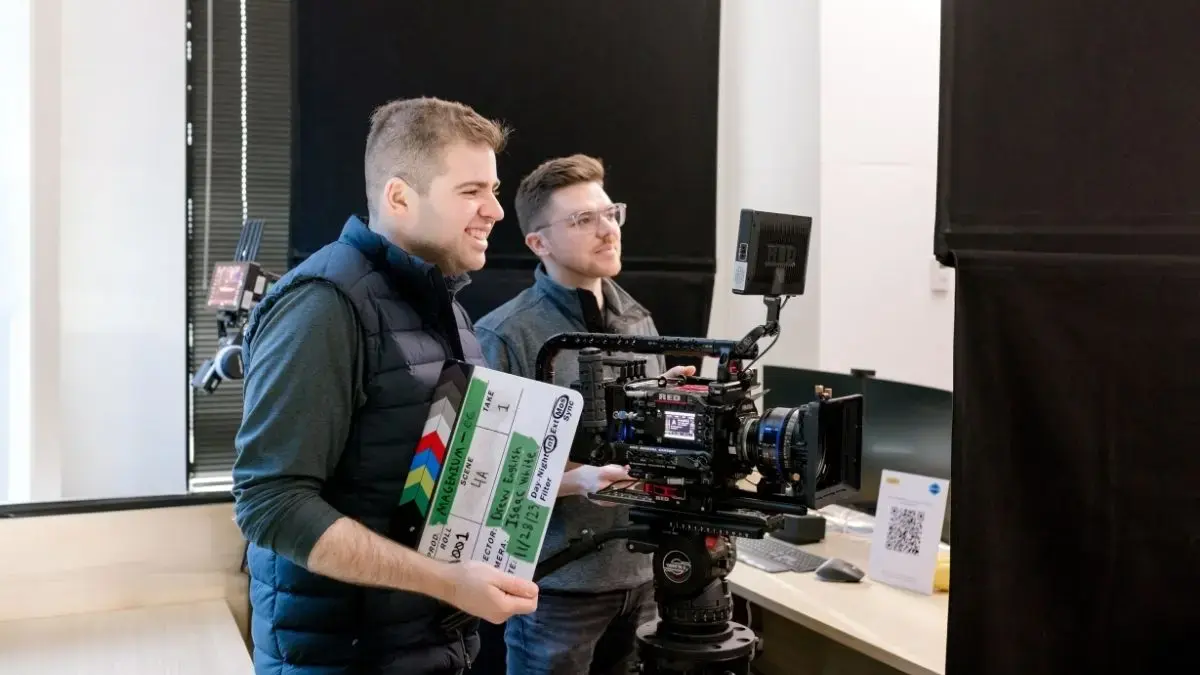Top Video Marketing Statistics in 2025: Key Trends and Insights
There are many types of video marketing, from personalized video marketing to social media marketing and everything in between. But one thing is...
▶ Video Strategy & Discovery
A video marketing strategy will keep your production cohesive and on schedule.
▶ Creative Treatments, Scripts & Storyboards
Bring your vision to life with professional scriptwriting and storyboarding services.
▶ Production Preparation
Prepare for your corporate video with professional video production services.
▶ Full Service Filming Days
Discover how Charter & Co can help you bring your vision to life through expert on-set filming services.
▶ Video Editing, Color Grading & Sound Design
Elevate your video marketing with Charter & Co’s expert video editing and post-production services.
▶ Motion Graphics
Captivate audiences with videos, ads, and social media that include high-quality animations.
▶ Licensed Music & Voiceovers
Elevate your videos with high-quality music licensing and voiceover services.
▶ Distribution Strategy & Advertising Support
Get your content noticed with a comprehensive video distribution strategy.
▶ Everything Video Marketing
Video marketing resources: What it is, why it matters, and how to do it.
▶ Everything Video Production
Your ultimate guide to video production resources: Tips and tricks for creating masterful videos.
▶ Blog
Helpful Blog resources for all of your video production and marketing needs.
3 min read
Charter & Co December 12, 2023

Video marketing isn’t optional anymore, it’s essential. From TikTok to YouTube to Instagram Reels, video content is dominating every major platform. Brands that invest in the right mix of video types can see up to 49% faster revenue growth and dramatically increased engagement across channels.
In this guide, we’ll break down the 9 most impactful types of video marketing content and how to use them to elevate your brand strategy.
Video marketing is a type of marketing communication that uses video content for purposes such as promoting your product or service, increasing social engagement, and driving sales. To master video marketing, your corporate video strategy should include different types of video content, like instructional videos, advertisements, and testimonials.
Like many internet-based marketing activities, video marketing first emerged around 2005, coinciding with the launch of YouTube. However, it was the rise of mobile phone usage that truly accelerated the proliferation of video marketing. Video consumption has only increased in recent years, jumping from 10.5 hours of content watched weekly in 2018 to 19 hours per week in 2022.
While platforms such as YouTube and TikTok were designed with video content in mind, others like Facebook, Instagram, LinkedIn, and X (formerly Twitter) are also seeing increased video marketing activity, pushing video content higher in their algorithms.
The takeaway? Video content is only going to become more necessary for businesses and brands of all sizes. Read on to learn how to leverage video to take your corporate marketing strategy to the next level.
Attention spans are decreasing as people seek faster, more visual content—and video fulfills that need. Viewers are far more likely to consume a full video than read an article in its entirety.
Implementing a corporate video strategy can increase your organic growth significantly. The best product marketing videos keep people on your website longer and drive more engagement, leading to higher sales and revenue growth. Nearly 90% of customers use product videos to make purchase decisions, and video can accelerate revenue growth by 49% year over year.
Video also improves organic reach: websites with embedded videos keep users engaged up to 88% longer and rank higher in search results. On social media, videos are 20x more likely to be shared, dramatically boosting visibility and engagement.
Video marketing includes many formats, each with unique benefits. The following nine types of videos are the most impactful for building awareness, trust, and conversions.
Best for: Product overviews, mission statements, homepage intros
Explainer videos describe the “why” behind your product or service, often featured on landing pages. Including an explainer video can increase conversion rates by up to 144%. These versatile videos can be adapted for any stage of the marketing funnel.
Best for: Case studies, sales pages, retargeting campaigns
Testimonial videos showcase customer success stories and build credibility. Nearly 90% of customers rely on product videos when making purchasing decisions. When requesting testimonials, ensure participants feel comfortable and authentic so the story feels natural and trustworthy.
Best for: Brand awareness, social media ads, website banners
Lifestyle videos show your product in aspirational, real-life settings, helping customers envision how it fits into their lives. These videos perform especially well on Instagram and other visually driven platforms.
Best for: Product education, email campaigns, search visibility
How-to videos demonstrate product use in real time. 73% of people prefer learning through video. These videos improve SEO and engagement, remaining relevant long after publication.
Best for: LinkedIn content, brand trust, FAQ support
Interview or Q&A videos showcase expertise and build credibility. By featuring experts or team members, you humanize your brand and strengthen audience trust.
Best for: Social proof, recruitment, fundraising recaps
Event videos can be live streams or recorded recaps that boost engagement before, during, and after events. Event recap videos in particular highlight success and encourage participation in future events.
Best for: Brand visibility, community building, viral reach
Short-form videos created for social platforms like TikTok, Instagram, and YouTube Shorts can deliver some of the best ROI in marketing. Repurpose snippets from longer videos to reach audiences across multiple channels.
Best for: Lead generation, remarketing, cross-platform campaigns
Video ads drive conversions and keep your brand top of mind. Sponsored videos on social media or streaming platforms like YouTube and Hulu can reach targeted audiences and complement traditional ad strategies.
Best for: E-commerce, onboarding, product launches
Product videos showcase your offerings and highlight their benefits. These videos can live on product pages, in emails, or on social media, increasing time-on-site and conversions.
Video consumption continues to rise, making it essential for businesses to adapt their marketing strategies. Incorporating video will expand reach, boost SEO, improve engagement, and drive more sales. However, producing high-quality video content requires expertise and resources.
If you're ready to invest in video marketing but need expert guidance, reach out to Charter & Co. We’ll help you from concept to production to ensure your videos achieve maximum impact.

There are many types of video marketing, from personalized video marketing to social media marketing and everything in between. But one thing is...

The History of B2B Video Marketing B2B video marketing has been around since the early 1940s, but it hasn’t always been so glamorous. Because B2B...

From social media to TV, videos can grab viewers' attention and set a positive impression for your brand. With an effective video strategy, you can...